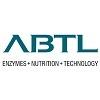Check out what is new in Poultry Industry
Find the best technical articles, forums, and videos on Poultry Industry at Engormix. Enter now and interact with the world's largest agricultural social network.
.jpg&w=3840&q=75)
Fausto Solís (The Wenger Group) speaks on a replacement of calcium carbonate in layer diets, as well as the importance of magnesium levels, during this interview at IPPE in Atlanta, USA....
Comments : 0
Recommendations: 0
.jpg&w=3840&q=75)
Gwen Venable (IPPE Executive Vice President - Expo & Communication Services) talks about the success of the IPPE 2024 in Atlanta, and shares the dates for next year's edition: Jan. 28-30, 2025....
Comments : 0
Recommendations: 0
.jpg&w=3840&q=75)
Mike Gauss (Kent Nutrition Group) offers insights into achieving ESG goals while staying true to your company's core values, in this interview during IPPE 2024 in Atlanta, USA....
Comments : 0
Recommendations: 0
Héctor Leyva-Jiménez (United Animal Health) Broiler chickens from commercial rearing facilities are subjected to a variety of stressors that increase disease susceptibility and reduce growth. Direct-fed microbials (DFM) can be employed to introduce beneficial bacteria to the digestive tract of poultry and through diverse mechanisms boost performance. The present study was conducted to evaluate the effect of supplementing broiler diets...
Comments : 0
Recommendations: 0
.jpg&w=3840&q=75)

Mycotoxin detection: VICAM builds a stronger and more sustainable future for food
Suggested link
.jpg&w=3840&q=75)
Héctor Leyva-Jiménez (United Animal Health) talks about a technology to process pathogen profiles to identify coinfections and help make better decisions on the farm, in this interview during IPPE 2024 in Atlanta, USA....
Comments : 0
Recommendations: 0
Vijay Durairaj (Huvepharma) Turkey coccidiosis is caused by Eimeria species. Seven Eimeria species are recognized in turkeys of which three are considered highly pathogenic and predominant. Objective: The objective of this presentation is to provide an overview of the pathological lesions of turkey coccidiosis for field vets, techs, supervisors, and turkey growers. Application of advanced molecular diagnostic tools, such as PCR and...
Comments : 1
Recommendations: 0
Cristiano Bortoluzzi (dsm-firmenich) The objective of the present studies was to evaluate: (1) the impact of the supplementation with a Precision Biotic (PB) on the modulation of the cecal microbiome collected from broiler chickens submitted to a necrotic enteritis challenge model (Experiment 1); (2) to measure the cecal production of shorth-chain fatty acids (SCFA; Exp. 2). In Exp. 1, day-old chicks were placed on a completely randomized block design...
Comments : 0
Recommendations: 1
.jpg&w=3840&q=75)
Mueez Ahmad (Arm & Hammer) gives recommendations on how to prevent and deal with diseases associated with this bacteria, in this interview during IPPE 2024 in Atlanta, USA....
Comments : 0
Recommendations: 0


Overview of Performance of Listed Vitamin Companies in 2023
Suggested link
Looking back to the year 2023, the overall API market collapsed. The scarring effect left by the pandemic is hard to fade away completely; the global economy is facing downward pressure, the domestic livestock industry is in a downturn, and the prices of veterinary APIs continue to bottom out, hitting record lows. As the China Veterinary Medicine and Feed Trading Centre (CVMFTC) monitored, the VPi index for four weeks in January was 63.95, 63.41, 63.30 and 63.23. respectively....
Comments : 0
Recommendations: 0
Julián Melo (Universidad Nacional de Luján / Dietaxion) In a context of rising prices of feed ingredients, the improvement of the overall feed digestibility and maximum utilization of nutrients in the feedstuffs should be a priority. Previous studies have shown the benefit of a double-buffered sodium butyrate (DBSB) on the performance and intestinal health of broilers fed low energy and protein diets (LEP). The aim of the study was to...
Comments : 0
Recommendations: 2


Effects of Muco-defen® on Clostridium perfringens-induced necrotic enteritis in broilers
Suggested link
Jodi Delago (Arm & Hammer) Hatchability rates in the US broiler industry have been declining since 2014. The average weekly hatchability rate in the US in 2023 has been approximately 80.7%, a decrease of more than 4% since 2014. Published studies of nonviable embryos in Canada indicated that Enterococcus faecalis and Escherichia coli are frequently recovered from nonviable embryos and that infection by one or both bacteria may be contributing to...
Comments : 0
Recommendations: 1
Amine Benarbia (NOR-FEED) Eimeria spp. completes its life cycle within the host’s gastrointestinal tract. its reproduction has been known to damage enterocytes, leading to decreased growth performance and welfare in chickens. Controlling the reproduction cycle and limiting oocyst excretion could explain the observed efficacy of steroidal saponin-based standardized premixture -Norponin XO- (NPXO) supplementation in chicken. The objective of this...
Comments : 4
Recommendations: 3
Kalen Cookson (Zoetis) Infectious bursal disease virus (IBDV) infections within the first 2 weeks of age cause significant immune suppression while infections after 3 weeks are less severe and more transient. The purpose of this study was to see if a 3-week IBDV challenge could significantly reduce immunity against an infectious bronchitis virus (IBV) challenge given 4 days later. Study Design: Ross 708 broilers with high maternal antibodies to IBDV...
Comments : 0
Recommendations: 0
.jpg&w=3840&q=75)
Dr. Markus Wiltafsky-Martin, Director of Service Commercialization at Evonik Animal Nutrition, explains what NIR is, how it operates, and demonstrates how AMINONIR® swiftly and accurately determines the nutritional quality of your feeds and raw materials – ensuring fast, reliable results of the highest quality.
...
Comments : 0
Recommendations: 4
.jpg&w=3840&q=75)
Mr. O.P. Singh, Managing Director of ABTL Enzymes, speaks about the challenges and opportunities that the Indian Poultry Sector has to face in order to improve its business operation...
Comments : 0
Recommendations: 0
.jpg&w=3840&q=75)
Joshua Jendza (Qualitech) talks about avoiding pathogen growth while providing iron to the bird, and how iron works against Salmonella and other bacteria, during this Engormix interview....
Comments : 0
Recommendations: 2
I. INTRODUCTION Nutrient requirements are established by means of dose-response studies. Data is subjected to appropriate regression analysis and the level needed to maximise a given response (body weight gain, feed efficiency, carcass yield, etc.,) is defined as ‘requirement’. The estimates are compiled as ‘tables of nutrient requirement’ e.g., NRC, CVB, Brazilian Tables, nutrition guides by the genetic suppliers, and are used by field nutritionists as...
Comments : 2
Recommendations: 1
I. INTRODUCTION In the 1990s, researchers from the American Soybean Association (ASA) showed that soybean meal with similar proximate analysis can perform very differently in poultry and swine feeding. Subsequently, Creswell and Swick (2008) carried out feeding trials, AME and digestible amino acid analysis of 4 soybean meals. They found that there was a large difference between the soybean meals in BWG and FCR from the broiler feeding trials as well as in AME and digestible lysine....
Comments : 1
Recommendations: 4
I. INTRODUCTION With ongoing genetic selection for improved persistency of lay and feed efficiency (FE) in laying hens, the egg industry is pursuing the opportunity to extend layer hen lifespan until they are 100 weeks of age (WOA), with an aim for each hen to produce up to 500 eggs. This presents some challenges for the hen as during this longer laying cycle she will be producing more than 31 kg of egg product (Muir et al., 2022c) and using approximately 1 kg of calcium (Ca) to...
Comments : 0
Recommendations: 0
I. INTRODUCTION Feeding the world’s projected burgeoning human population increase of 2.2 billion people by 2050 will place tremendous pressure on food security. The poultry industry is innovative and well positioned to address this problem through increased efficiency and waste reduction. Globally, 32% (by weight) of produced food − equivalent to 1.3 billion tons − is lost or wasted every year. Conversion of food waste into raw materials for production of poultry...
Comments : 0
Recommendations: 0




.jpg&w=3840&q=75)



.jpg&w=3840&q=75)

.jpg&w=3840&q=75)


.jpg&w=3840&q=75)




.jpg&w=3840&q=75)
.jpg&w=3840&q=75)

.jpg&w=3840&q=75)

.jpg&w=3840&q=75)


.jpg&w=3840&q=75)












